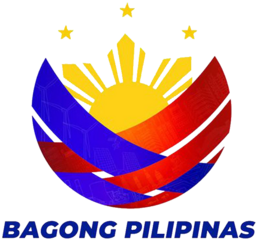Purple yam has been a staple in Filipino desserts, pastries, and snacks, from the classic halayang ubi to the avant-garde ubi taho or champorado. In late 2019, the Religious of the Good Shepherd announced that they will be selling “white” ubi jams instead of the usual hue due to shortage of purple yam supply. This might be one of the instances that highlighted the gap between its demand and local production.
In Central Luzon, purple yam is mainly sourced from the local production of the indigenous peoples in Zambales and Pampanga. This root crop has high tolerance to stress and drought. However, the existing farmer’s practice cannot fully maximize their local production. They usually plant ubi in small patches of land and manage it only through their local knowledge, which results in low productivity.
To assist and empower selected ubi farming indigenous peoples in the said provinces, DA-Central Luzon Integrated Agricultural Research Center for Upland Development (CLIARC-UD) spearheaded a community development program. Funded by DA-BAR, the project aims to increase the ubi yield and income of the IP farmers, as well as link three IP farmers’ groups to institutional buyers like MAYANI.
DA-CLIARC-UD trained 30 IP farmers on ubi production. They introduced the following technology interventions: 1) use of quality planting materials and recommended varieties PSB VU-2 (Zambal) and PRA-35 (Kinampay), 2) cropping calendar from May to February, 3) use of ubi production guide developed by the Department of Science and Technology-Philippine Council for Agriculture, Aquatic and Natural Resources Research and Development, and 4) soil analysis as basis for fertilizer application.
“Malaking pagkakaiba sa [pagtatanim namin] noon at sa ngayon kasi naka-arrange na ang pagtatanim. Hindi gaya dati may tanim ka rito may tanim ka doon,” said farmer-partner Benzon S. King Jr. when asked about the differences between their local practice and the technology intervention introduced through the project.
King is a member of the Sama-sama sa Kaunlaran para sa Pagsulong ng Barangay Ayta Inararo, Inc., one of the farmer cooperatives and associations tapped in the project. The other two are the Lupon ng Itanglew sa Ganap na Asenso and Ayta Sambunga Farmer Association. Through the project, DA-CLIARC-UD has procured 17,000 planting materials which were distributed to the farmers.
While the project initially aims to link them to institutional buyers, project leader Dr. Emily A. Soriano shared during the project monitoring on 15 February 2023 that the IP farmers asserted their preference to market their own produce because they can dictate the selling price.
“Hindi nila problem ang market. Nabebenta nila ang kanilang produkto sa presyong gusto nila. For example, hindi bababa ng PhP 50 [per kilogram pero] nabebenta pa nila hanggang PhP 80 per kilo. Unlike sa area na kinukuhanan ng MAYANI, nasa PhP 20-25 lang ang [per kilo],” she said.
She added, “Kaya sabi nila na mas okay na sila ang magma-market ng sarili nilang produkto dahil nakukuha nila ang gusto nilang presyo. Isang ektarya na matamnan nila kumikita sila mula PhP 80,000 to PhP 100,000.”
Dr. Soriano also noted that while the project introduced the cropping calendar of May to February, they decided to retain the farmers’ practice of December to November, as it coincides with the holiday season when demand is at its highest.
Other activities of the project are the production of good quality planting materials and the development of ubi powder which can be used as base for various pastries and desserts.


